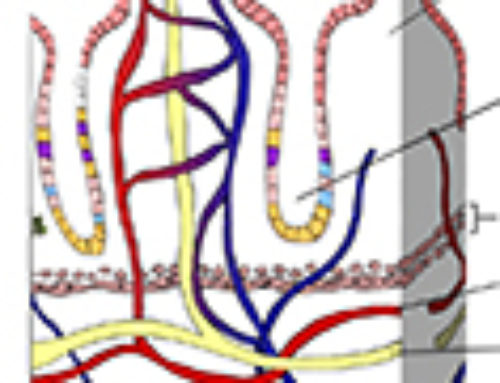
Arthritis refers to a group of conditions involving inflammation of the joints of the body. Arthritis is the leading cause of disability in people over fifty-five, but can affect people at any age. While there are many different types of arthritis, the most common symptom experienced by sufferers is persistent joint pain, which can manifest in a variety of different ways including wrist, hand, spine, hip and knee discomfort.
There are many different types of arthritis, and each has a different cause. The most common form of arthritis is osteoarthritis, which is a degenerative joint disease that results from trauma or infection of the joint, or from old age. Another common type of arthritis is rheumatoid arthritis, which is an autoimmune disease where the body attacks itself and this leads to the destruction of the joint. Arthritis in younger people is often a result of rheumatoid arthritis.
Arthritis is usually much more common in women compared to men, and it can be diagnosed by x-ray, blood testing and physical examination. Although arthritis cannot be cured, an effective arthritis treatment regimen can help manage the disease and can include physical and occupational therapy, lifestyle changes (including exercise and weight control), medications and dietary supplements. In more severe cases surgery on the arthritic joint may be required to restore function and mobility.
General symptoms
Common symptoms of arthritis include:-
- Persistent joint pain or discomfort
- Joint swelling or tenderness
- Stiffness after periods of inactivity, such as sitting or sleeping
- The feeling or sound of bone rubbing on bone when the joint is used
- Redness or warmth around the joint
- Fatigue
- Fever
Different types of arthritis
Osteoarthritis
This is the most common form of arthritis and is caused by the breakdown of joint cartilage. Cartilage acts to cushion the bones and to help the joint move smoothly. As the cartilage breaks down, the ends of the bones can thicken, lose their normal shape and begin to rub together causing pain and stiffness.
Osteoarthritis most commonly affects the joints of the: –
Fingers
- Symptoms are aching, numbness and stiffness
- Can have an enlarged or gnarled appearance
- Development of small, bony knobs on the end or middle joints of the fingers
- Commonly the base of the thumb joint is affected
Spine
- Stiffness and pain in the neck or in the lower back
- Weakness or numbness in the arms or legs
Hips
- Pain and stiffness in the hips, groin, inner thigh, or knees
- This can lead to severe disability an difficulty moving, bending, and walking
Knees
- Commonly affected by osteoarthritis
- Symptoms are stiffness, swelling and pain of the knee joint
- This makes it difficult to walk or climb, and to get in and out of chairs or the bath
The joints of the shoulders, wrists, elbows and ankles can also be affected but this is less common and is often a result of injury or unusual stress to that joint. Work-related repetitive injury or physical trauma can increase the risk of developing osteoarthritis. For example, a strenuous job that requires repetitive bending, kneeling, or squatting, may increase the risk of osteoarthritis at the knee.
Rheumatoid arthritis
Rheumatoid arthritis is an autoimmune disease where the body’s natural immune system does not operate properly and attacks the healthy joint tissue, which initiates joint inflammation and results in damage.
Rheumatoid arthritis is caused by inflammation of the joint lining, which is called the synovium. This causes pain, stiffness, swelling and redness and heat. Joints that are affected by rheumatoid arthritis can also lose their shape over time, which restricts normal movement and limits function. Rheumatoid arthritis can affect a wide range of joints and can also affect other parts of the body such as the blood, heart and lungs. Rheumatoid arthritis commonly affects individuals between the ages of 20 and 50, but a special type, called juvenile rheumatoid arthritis can affect young children.
In contrast to osteoarthritis, pain is felt on both sides of the body in rheumatoid arthritis. For example, if one wrist is affected, the other one is also. With osteoarthritis it is possible for only one wrist to be affected.
Septic arthritis is caused by joint infection, which is the result of invasion by an infectious agent such as bacteria, viruses or fungi. The joint can become infected when an infectious agent is carried by the bloodstream from an infection elsewhere, or through the skin.
Ankylosing spondylitis is a form of rheumatoid arthritis that affects the spinal column. It is a chronic, painful, degenerative condition, which is characterised by inflammation of the facet joints and changes of the ligaments of the vertebral column. Ankylosing spondylitis results in a stiffening of the vertebral joints and ligaments, so that movement becomes increasingly painful and difficult. This type of arthritis tends to affects males almost exclusively.
Psoriatic arthritis is a form of rheumatoid arthritis that affects the knees, ankles, fingers and toes. It is associated with psoriasis, a chronic skin disease that is characterised by dry red patches on the skin surface, which can be covered with scales. Psoriatic arthritis is equally common across both sexes and usually develops in individuals older than 40 years.
Diagnosis
Joint pain, stiffness and swelling that is experienced for more than 2 weeks may be a sign of arthritis. Diagnosis can be used to find out what type of arthritis you may have. In addition, early diagnosis can help to minimise pain and reduce joint damage and disability.
Diagnosis will usually include a medical history and physical examination to check problem joints and assess overall health. Other tests may also be performed to confirm the diagnosis and to assess the extent or severity of joint damage. Some of these tests may include:-
- X-ray. These can show cartilage loss and bone damage. They can also provide an indication of how rapidly joint damage is progressing over time
- Joint aspiration. If infection is suspected then a sample of synovial fluid can be taken from the affected joint using a needle, which can then be tested for bacterial or viral infection
- Blood test. This can measure different factors of the blood that are indications of inflammation
Treatment
Arthritis cannot be cured, and the goals of treatment are to decrease pain symptoms, slow the progression of the disease by minimising joint damage and to maintain mobility by preserving joint function. The best treatment for arthritis depends on the type, and can include:-
- Physical activity and occupational therapy. For example, exercising contributes to overall health and also helps to maintain the joins. Regular exercise also encourages weight control, reduces pain and increases muscle strength
- Dietary supplements such as fish oils from cold-water fish such as salmon, mackerel and tuna have been shown to reduce inflammation around the joints and reduce the symptoms of arthritis. Other supplements include glucosamine, and chondroitin
- Eating a nutritious diet is important for maintaining ideal weight and improving bone health
- Reducing stress helps to reduce pain and stiffness associated with arthritis
- Injections can also be given locally into the joint to reduce pain
- Medications such as nonsteroidal anti-inflammatory drugs, corticosteroids and analgesics for pain relief can also relieve pain
- If arthritis is due to infection of the joint, then the administration of antibiotics can help to reduce inflammation
- The are also many natural treatments available for arthritis including acupuncture, acupressure, massage and magnetic therapy
- If arthritis becomes severe, then joint replacement surgery (arthroplasty) may be required to restore joint integrity. Joint surgery is usually considered a last resort treatment option, and is usually considered if the other above treatment measures do not work, or stop working. When joint damage is severe or when pain interferes with daily life, joint surgery may be an option with the goal of decreasing pain and restoring function.
Risk Factors
Factors that may increase your risk of developing arthritis include:-
- Age is a strong risk factor for arthritis as it usually occurs in older children.
- Before age 45, OA occurs more frequently in men; although After the age of 45 arthritis is more common in women, especially in the hand
- Joint injury or overuse caused by physical labor or sports. Traumatic injury to a joint increases your risk of developing OA in that joint
- Traumatic injury, physical labour or sport can increase the risk of developing arthritis by causing injury or overuse of the joint
- The risk of getting arthritis increases with increasing weight, as this places more strain on the joints
- People with poor joint alignment, such as dislocated hips or double-jointedness, are more likely to develop arthritis
- Hereditary defect in one of the genes responsible for a cartilage component called collagen can cause deterioration of cartilage, which can lead to arthritis




Leave A Comment